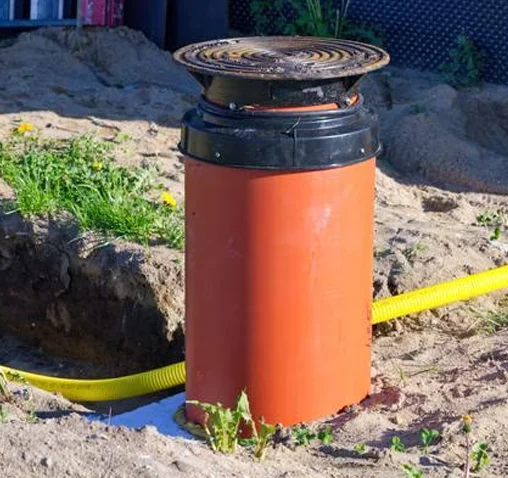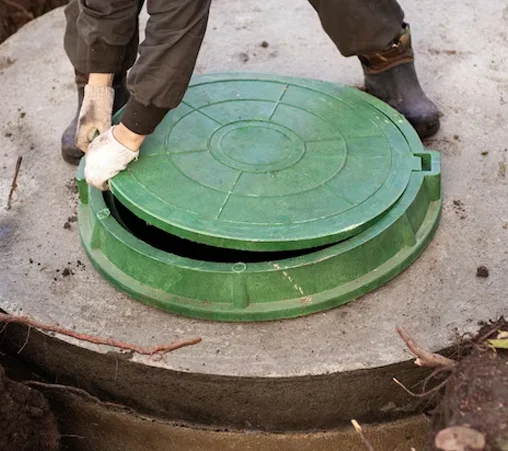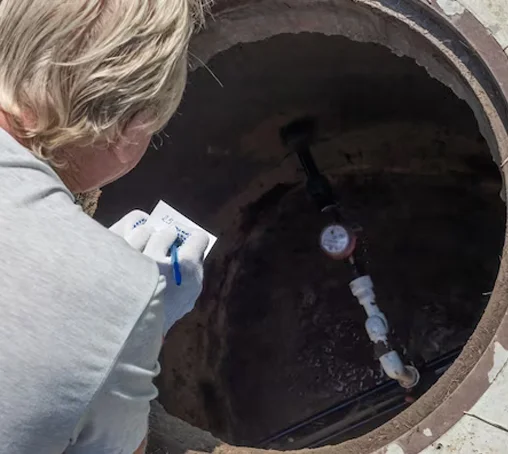Wastewater Disinfection Chemicals
Wastewater Disinfection
Tablets

Guideline for Use:
The tablets should be inserted in the chlorination tube at the rate of 1 to 2 tablets per person per week, with no more than 4 or 5 tablets being inserted at one time.
- The tube, which can hold 12 to 15 tablets, should never be filled with this many tablets, because the tablets are soft and humidity in the system can make the entire column of tablets swell up and stick in the tank so the ones on top do not fall to the bottom of the chlorination tube. As the bottom tablets dissolve and the effluent flows under the tablets without being disinfected, or cause all of the tablets to dissolve at one time and turn to a gooey mess.
- Not every household will fall into the 1 to 2 tablets per person per week guideline. Sometimes you may use more tablets, sometimes you may use less. For example, is everyone is in the house during the day or do you all leave the house for work and school, do you travel a lot, do you have a lot of guests, do you have the new low-water use laundry systems, do you have a garden tub you fill on a daily basis?
- Do Not Depend On Your Maintenance/Monitoring Company for Your Disinfection! Most maintenance/monitoring contracts provide for visits every 4 to 3 months. Although there are some permitting agencies or situations that may require visits more frequently. Generally, if more than one person is living in your home, it is not possible for a monitoring company to insert enough disinfectant tablets in your chlorination tube to last the household for 4 months. If the guideline of 1 to 2 tablets per person per week, with no more than 4 Or 5 tablets being inserted at one time is adhered to.If yours is a one-person household, it could be possible for a maintenance provider company to install enough tablets to last you 4 months. However, if your maintenance company is putting tablets in for you, do the math! If the provider is installing tablets for you once every 4 months and there are:
- 2 in the household x 1 to 2 tablets per week x 4 weeks – you will be using to 16 to 32 tablets in 4 months
- 3 in the household x 2 to 3 tablets per week x 4 months – you will be using 32 to 48 tablets in 4 months
- 4 and up in the household x 3 to 5 tablets per week x 4 months – you will be using 32 to 80 tablets in 4 months

Installing the chlorine tablets yourself, and monitoring your own chlorine use, is always the best and smartest choice. Since the tablets will dissolve according to the amount of water your household uses, you are the only one who has a handle on your water use. Even if enough tablets could be installed in the tube to disinfect the water for 4 months, the monitoring company does not have a clue as to how much water you use. Remember, it is your family that is in danger from the fecal bacteria in your wastewater treatment plant if the water is not disinfected, not your service provider.
Chlorinated Isocyanates, aka Tri-Chlor (swimming pool tablets)
These tablets (usually white tub with a yellow or orange top) can be purchased from swimming pool supply stores, discount retail stores and mail-order outlets.
Due to their widespread availability, Tri-Chlor tablets often make their way into wastewater treatment systems, though their use in the systems is both dangerous and illegal.
Tri-Chlor tablets dissolve more slowly than calcium hypochlorite and create a residual that does not readily dissipate. These tablets work well in swimming pools, where clean water is continually recirculated, and slow dissipation of residual is desired, but they are unsatisfactory for wastewater treatment. Tri-Chlor tablets will not thoroughly disinfect the effluent, and the chlorine residual remains for long periods of time to damage the receiving environment. The chlorine gas generated from the Tri-Chlor tablets can damage and rust the wiring in a wastewater treatment system from the effluent tank to the control box, making for a possibly expensive repair.
An additional danger can arise due to an accumulation of moisture within the Tri-Chlor tablet. Designed to be totally immersed in water, Tri-Chlor tablets that are exposed to periodic flows of liquid begin to decompose and release an explosive gas called “nitrogen trichloride”. If a sufficient concentration of nitrogen trichloride builds within the wastewater system, it could be ignited when exposed to an open flame, electric spark or organic contaminates. These explosions can be devastating, causing extensive property damage and potentially serious injuries.
LIQUID BLEACH CHLORINATORS
The affordable solution to disinfecting your effluent – 6% Sodium Hypochlorite (Liquid Household bleach)
The Liquid Bleach Chlorinator (LBC) dispenser we market and install for our customers has been patented for over a decade by the manufacturer who realized a need for a more reliable disinfection method for homeowners than what was already on the market. This LBC dispenser was designed and constructed to withstand the harsh effects of bleach and provide years of trouble-free use.
You can have a liquid bleach chlorinator (LBC) installed on any aerobic system.

The LBC will be install underground by the pump tank with a 4″ cap above ground. The LBC has a hose that runs into the pump tank and is tied in to the effluent pump with a venturi valve. Every time the effluent pump comes on, the LBC will doses the pump tank with bleach. This system will hold up to three gallons of disinfecting bleach.
This is a proven disinfection device that meets the applicable requirements of NSF standard 46 for chlorine dispensers. Certification requires the device to be used with 6% sodium hypochlorite (household bleach). The residential dispenser holds about 3-4 gallons of bleach. For a family of 4 that has average water consumption, the automatic bleach dispenser will use about 2-3 gallon of bleach a month. We can also accommodate our commercial customers with a commercial model. This means you will only have to fill the LBC once a month.
The Liquid Bleach Chlorinator will also save you hundreds of dollars per year in chlorine and never have to deal with the tablets again. If you choose to go with a LBC, DO NOT use “No Splash” or “Gel” based liquid bleach. These products clog the hose and will not allow your LBC to pull the bleach and your disinfection device will become inoperable.

